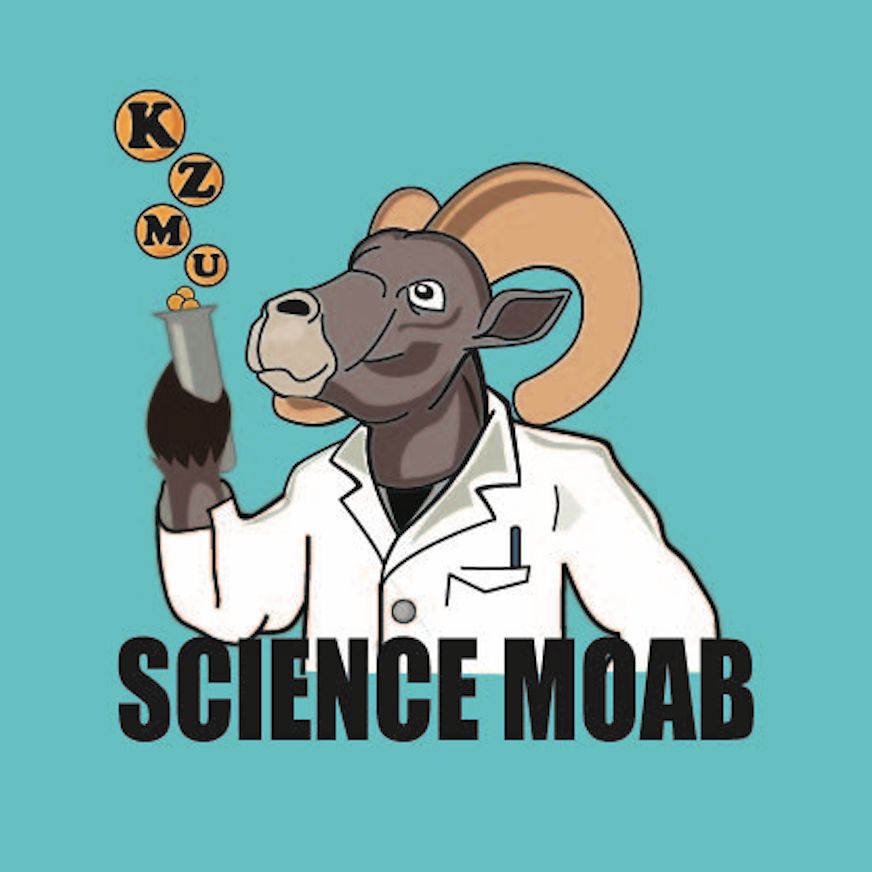Allison Stegner is a post-doctoral researcher at Stanford University who studies small mammals as a way to understand present and past environments. Here, Science Moab host Kristina Young speaks with Allison about the diversity of small mammals in our area, how they affect the landscape, and a theory about why so many deer mice are found along Highway 191. This interview was edited for length and clarity.
Science Moab: Can you tell us about some of the small mammal species that we have in this area?
Allison Stegner: Yes! We’ve got kangaroo rats – those are very cool. They walk on two legs. They actually hop just like kangaroos, they have these very long tails that they use for balance. They’re really amazing to watch. We also have a couple species of voles. They like to live near water. We have a lot of different species of deer mice. The one that you most commonly see, like in your house, that’s a common deer mouse.
There are also rock mice, there’s a bunch of different species within that category. My favorite is probably silky pocket mice. They have these cute little white dots on their ears that look like earrings and they’re just very docile and sweet. We have pack rats, of course, those are also commonly found in people’s garages.
Another species I really like is grasshopper mice. Those are the only meat-eating mice, they will actually eat other small mammals, they’ll eat scorpions and all kinds of insects, they’re really kind of wild.
And then of course, we have a bunch of different squirrels and chipmunks. That’s kind of the broad sweep of what we have out here in the small mammal community. There’s more out there than you generally see. They mostly come out at night, with the exception of the squirrels.
SM: What are these guys doing out in the desert and how do they impact the landscape?
AS: A lot of these species are burrowers that create really large underground networks. A lot of different animals rely on those burrow networks and they are really important for capturing rainwater and recharging aquifers. If you don’t have those burrows, you just have kind of flat desert, the rainwater will just run right off into creeks. But if you’ve got this burrow system, water can kind of sink in and it goes deep into the aquifer.
Small mammals also cache grain. So, they’ll gather seeds from native plant species and shove them in their burrows. And some of those seeds come up later when there’s water.
Small mammals are also a food source. We’ve lost a lot of the big predators there like wolves. There are some mountain lions and lynx, but not many, and we have an abundance of smaller carnivores like coyotes and predatory birds, which are relying on a lot of these small mammals for food.
I think that some of the big changes in the number of small mammals that I see in the places I’ve worked are because we don’t have those big predators that keep smaller predators, like coyotes, in check. Then those coyotes are kind of preferentially eating certain small mammals and allowing other small mammal species to really take off.
SM: Can you explain more about what you mean by that?
AS: Yeah, so what I’ve seen in a lot of sites is that those common deer mice are 90% of the population while the number of other species, like kangaroo rats, is really low. There are a few reasons that could be, but I think one reason has to do with differences in where coyotes are being hunted.
The number of coyotes hunted in San Juan County is really high relative to other parts of the state, especially along the Highway 191 corridor. Those are the places where I see this huge abundance of deer mice, so those deer mice aren’t getting eaten as much. Whereas other sites that are further from where people are [hunting coyote], I see fewer small mammals but a better balance of what species of small mammals are out on the landscape.
Science Moab is a nonprofit organization engaging community members and visitors with the science happening in Southeast Utah. To learn more and listen to the rest of Allison Stegner’s interview on the Science Moab podcast, visit www.sciencemoab.org/paleoecology.
Talking with local researcher Allison Stegner about little creatures in Southeast Utah.




